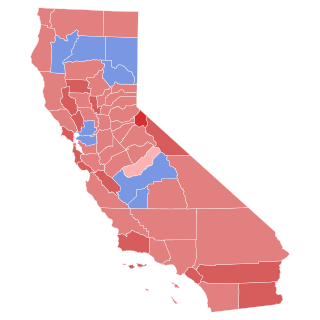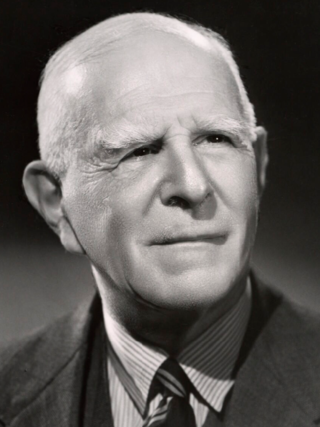| |||||||||||||||||||||||||||||||||||||
| |||||||||||||||||||||||||||||||||||||
| |||||||||||||||||||||||||||||||||||||
A by-election was held in the Wimmera electorate in regional Victoria on 9 February 1946, following the resignation of independent MP Alexander Wilson.
| |||||||||||||||||||||||||||||||||||||
| |||||||||||||||||||||||||||||||||||||
| |||||||||||||||||||||||||||||||||||||
A by-election was held in the Wimmera electorate in regional Victoria on 9 February 1946, following the resignation of independent MP Alexander Wilson.
| Party | Candidate | Votes | % | ±% | |
|---|---|---|---|---|---|
| Country | Winton Turnbull | 15,284 | 43.09 | +43.09 | |
| Country | Cliff Everett | 6,724 | 18.96 | +18.96 | |
| Independent Country | James Stoddart | 6,361 | 17.93 | +17.93 | |
| Independent Labor | John Somerville Smith | 2,923 | 8.24 | +8.24 | |
| Independent | Arnold Eberle | 2,042 | 5.71 | +5.71 | |
| Independent Labor | Fred Arlington-Burke | 1,824 | 5.14 | +5.14 | |
| Independent | Louis Phillips | 312 | 0.88 | +0.88 | |
| Total formal votes | 35,470 | 95.45 | –2.41 | ||
| Informal votes | 1,692 | 4.55 | +2.41 | ||
| Turnout | 37,162 | 82.89 | –13.73 | ||
| Two-party-preferred result | |||||
| Country | Winton Turnbull | 20,924 | 58.99 | +58.99 | |
| Country | Cliff Everett | 14,546 | 41.01 | +41.01 | |
| Country gain from Independent Country | Swing | +16.24 | |||

The 1948 United States Senate elections were held concurrently with the election of Democratic President Harry S. Truman for a full term. The 32 seats of Class 2 were contested in regular elections, and one special election was held to fill a vacancy. Truman campaigned against an "obstructionist" Congress that had blocked many of his initiatives, and additionally, the U.S. economy recovered from the postwar recession of 1946–1947 by election day. Thus, Truman was rewarded with a Democratic gain of nine seats in the Senate, enough to give them control of the chamber. This was the last time until 2020 that Democrats flipped a chamber of Congress in a presidential election cycle.

The 1946 United States Senate elections were held November 5, 1946, in the middle of Democratic President Harry S. Truman's first term after Roosevelt's passing. The 32 seats of Class 1 were contested in regular elections, and four special elections were held to fill vacancies. The Republicans took control of the Senate by picking up twelve seats, mostly from the Democrats. This was the first time since 1932 that the Republicans had held the Senate, recovering from a low of 16 seats following the 1936 Senate elections.

The 1946 United States House of Representatives elections were elections for the United States House of Representatives to elect members to serve in the 80th United States Congress. They were held for the most part on November 5, 1946, while Maine held theirs on September 9. November 1946 was 19 months after President Harry S. Truman assumed office upon the death of Franklin D. Roosevelt.

The 79th United States Congress was a meeting of the legislative branch of the United States federal government, composed of the United States Senate and the United States House of Representatives. It met in Washington, D.C., from January 3, 1945, to January 3, 1947, during the last months of Franklin D. Roosevelt's presidency, and the first two years of Harry Truman's presidency. The apportionment of seats in this House of Representatives was based on the 1940 United States census.

The United States House of Representatives elections in California, 1946 was an election for California's delegation to the United States House of Representatives, which occurred as part of the general election of the House of Representatives on November 5, 1946. Republicans captured control of Congress for the first time since 1928 due to the extreme unpopularity of President Harry Truman. California was indicative of the results as Republicans gained seven seats, one of which was won by a recently returned WWII veteran named Richard Nixon. Democrats would not regain a majority of the delegation until after the 1958 election.

The 1946 California gubernatorial election was held on November 5, 1946.
Members of the New South Wales Legislative Assembly who served in the 34th parliament held their seats from 1944 to 1947. They were elected at the 1944 state election, and at by-elections. The opposition Democratic Party merged into the nascent Liberal Party in late 1944, becoming the New South Wales branch of the new party. The Speaker was Daniel Clyne.

The 1946 United States elections were held on November 5, 1946, and elected the members of the 80th United States Congress. In the first election after World War II, incumbent President Harry S. Truman and the Democratic Party suffered large losses. After having been in the minority of both chambers of Congress since 1932, Republicans took control of both the House and the Senate.

The 1946 United States Senate election in Pennsylvania was held on November 5, 1946. Incumbent Democratic U.S. Senator Joseph F. Guffey sought re-election to another term, but was defeated by Republican nominee Edward Martin. This was the last time that the Republican candidate won Philadelphia in an election for the Class 1 Senate seat.

The 1946 Massachusetts gubernatorial election was held on November 5, 1946. Republican Robert F. Bradford defeated Democratic incumbent Maurice J. Tobin, Socialist Labor candidate Horace Hillis, and Prohibition candidate Guy S. Williams.

The 1946 United States Senate elections in Ohio was held on November 5, 1946, alongside a concurrent special election to the same seat.

The 1946 United States Senate special election in North Dakota took place on June 25, 1946. Democratic Senator John Moses, first elected in 1944, died on March 3, 1945, just two months into his term. Republican Governor Fred G. Aandahl appointed State Senator Milton Young to fill the vacancy and a special election was scheduled.

The 1946 United States Senate election in Texas was held on November 5, 1946. Incumbent Democratic U.S. Senator Tom Connally was re-elected to his fourth term in office, with only minor opposition in the Democratic primary and general elections.

The two 1946 United States Senate elections in California were held concurrently on November 5, 1946.

An election to the County Council of London took place on 7 March 1946. The council was elected by First Past the Post with each elector having two votes in the two-member seats. The Labour Party once more made gains, again increasing their majority over the Conservative Party.
The 1946 Massachusetts general election was held on November 5, 1946, throughout Massachusetts. Primary elections took place on June 18.

The 1946 Iowa State Senate elections took place as part of the biennial 1946 United States elections. Iowa voters elected state senators in 23 of the state senate's 50 districts. State senators serve four-year terms in the Iowa State Senate.

Elections were held in Illinois on Tuesday, November 5, 1946.